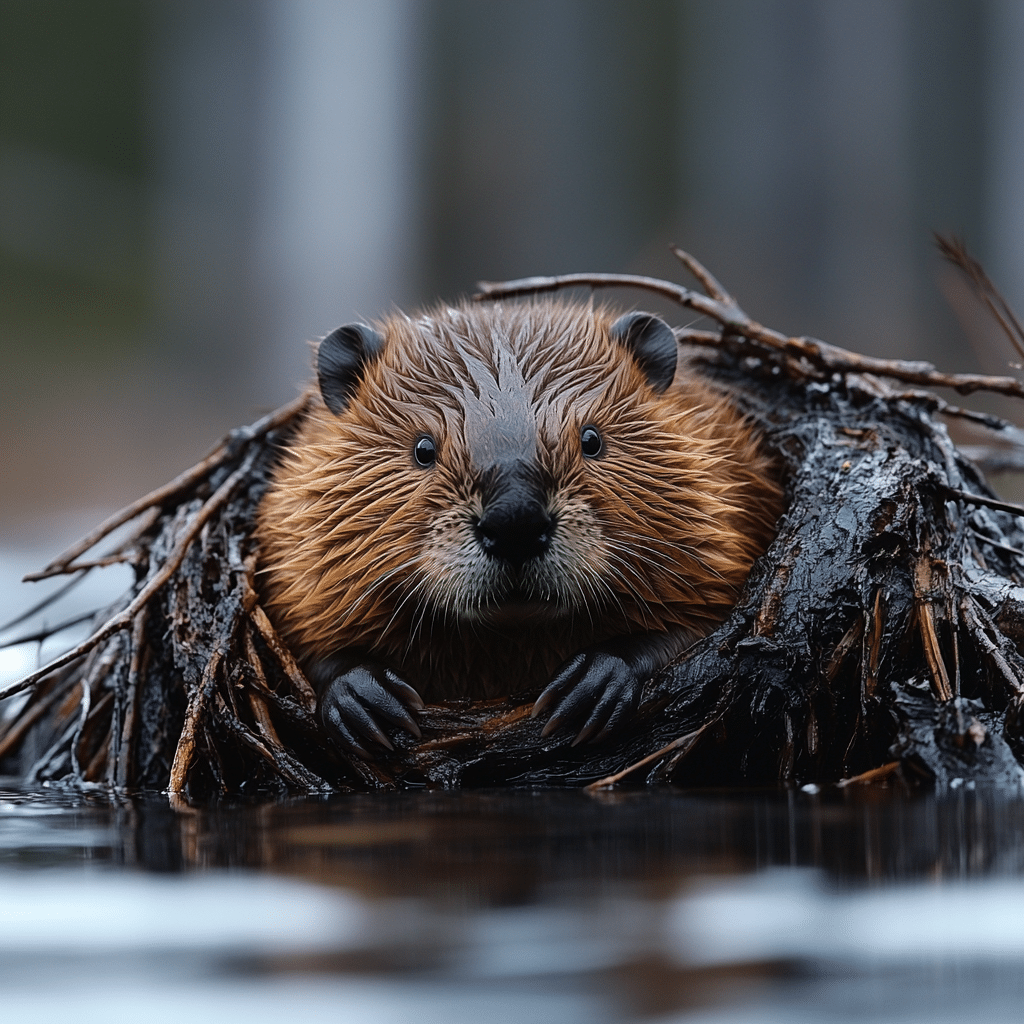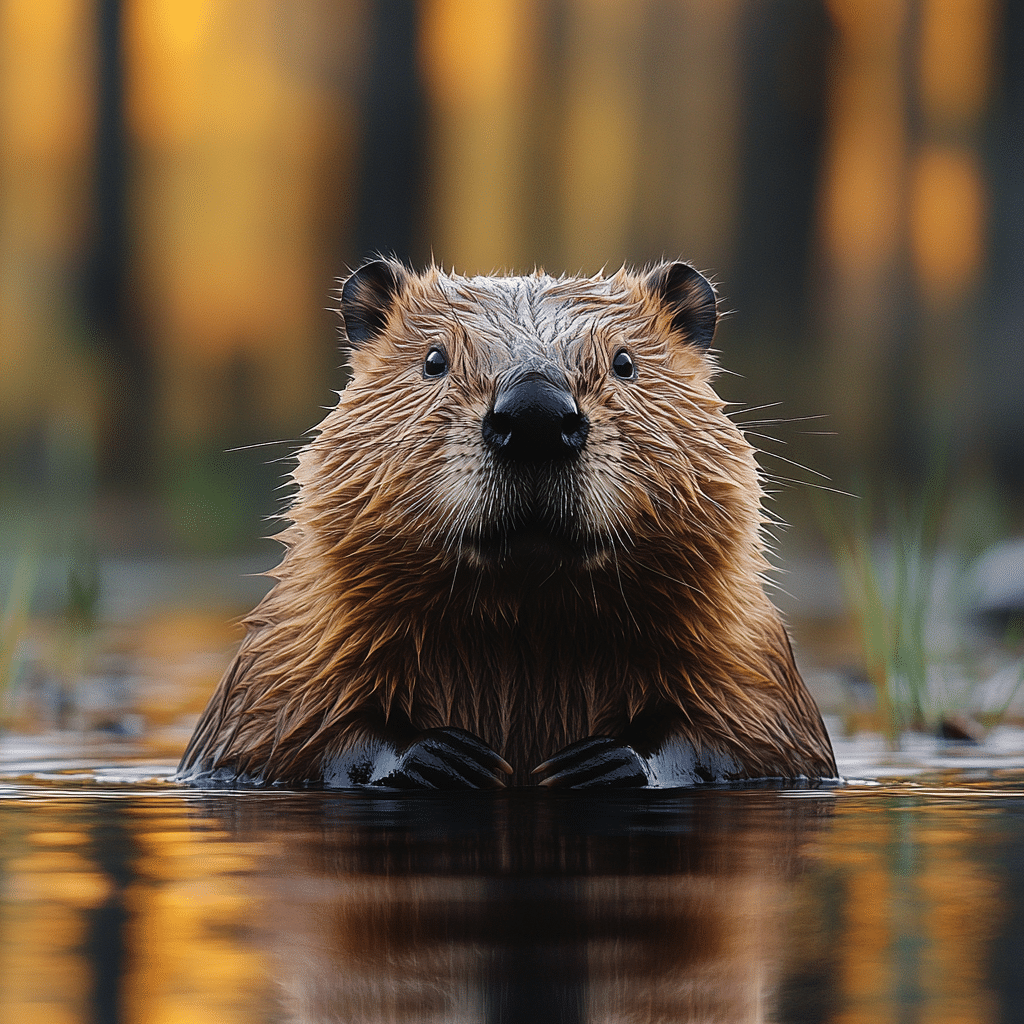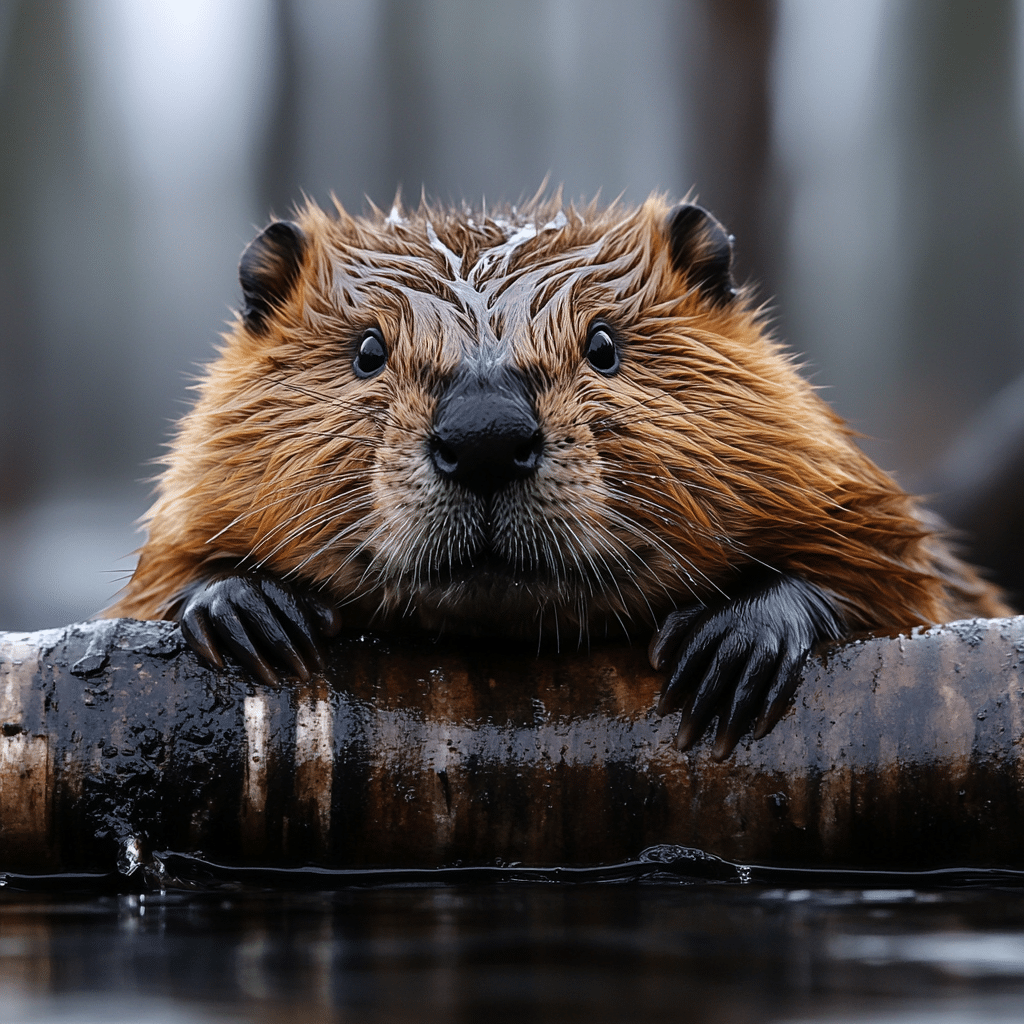Beavers are renowned for their remarkable engineering skills, particularly in constructing dams that significantly alter their habitats. But why do beavers build dams? This inquiry delves into instinctual behavior and highlights their ecological importance and interactions within their environments. With their adept skills, beavers not only ensure their survival but also foster ecosystems that benefit countless species, including fish and amphibians. In a world crowded with urbanization and climate challenges, understanding the role of these industrious creatures becomes crucial.
1. The Primary Reasons Beavers Build Dams
Beavers build dams primarily for four essential reasons:
a. Creating Habitats for Survival
Dams create ponds that serve as habitats for beavers and numerous wildlife. These ponds act as a safe refuge from predators like coyotes and wolves. Research from the University of Alberta shows these environments support diverse wildlife, including fish and amphibians, thriving in stable aquatic ecosystems. This interaction enriches biodiversity and highlights the beaver’s role as a keystone species, shaping the ecosystem for many other organisms.
b. Foraging for Food
Through dam-building, beavers secure a consistent food supply during various seasons. The ponds they create flood areas where trees and shrubs flourish, providing a steady diet of bark and leaves. Willows and aspens become staples in their diet, especially in winter when other food sources dry up. An observation from Great Lakes Research reveals that within 200 feet of a pond, new tree growth can significantly increase due to the beaver’s selective foraging and habitat modification, showcasing their impact on the landscape.
c. Maintaining Water Levels
Beavers expertly control water levels, helping them thrive in changing conditions. Their dams allow for a stable environment, particularly during droughts or heavy rainfall. The National Park Service notes that beaver dams’ capabilities in water retention can effectively mitigate flooding downstream, illustrating their impact on larger ecosystems. This ability to create stability makes them vital players in their habitats.
d. Protection Against Climate Change
With climate change affecting habitats worldwide, beaver dams help create microhabitats that cushion extreme weather effects. They provide shelter and regulate water temperatures, promoting ecosystems that can endure climate fluctuations. A study from Oregon State University emphasizes that by fostering moisture retention, beaver dams help preserve critical habitats in increasingly arid conditions. As climate crises escalate, understanding why do beavers build dams emerges as pivotal to ecosystem resilience.

2. Behavioral Aspects of Dam Construction
Understanding the psychology behind why do beavers build dams reveals fascinating social behaviors and instincts. Beavers have a strong instinct to build and maintain their dams, often starting early in life. Their construction efforts are collaborative, cultivating a strong family unit within their lodges.
a. Youthful Learning Through Play
Young beavers, known as kits, learn construction skills primarily through play. They tag along with adult beavers, gradually honing their abilities. Observations from the Animal Behavior Society indicate that this social aspect is crucial for developing robust beaver communities, ensuring knowledge transfer across generations. This playful learning prepares kits for the challenges of adulthood.
b. Communication Through Dam Maintenance
Beavers communicate through both vocalizations and scent marking, coordinating their actions during dam upkeep. This communication is key for the proper functioning of their structures, ensuring safety and signaling territory boundaries to other beavers. Effective teamwork means healthier habitats in which beaver families can thrive, underscoring how instinct and collaboration guide their behaviors.
3. Ecological Impacts of Beaver Dams
The construction of beaver dams isn’t just about individual survival; it carries deep ecological consequences.
a. Enhancing Water Quality
The presence of beaver dams improves water quality by trapping sediment and filtering pollutants. Research from the University of Wisconsin indicates that streams influenced by beavers exhibit higher clarity and lower nutrient loads, resulting in cleaner water for various species. This filtering system contributes to healthier aquatic ecosystems, benefiting not just beavers but entire communities of wildlife.
b. Supporting Amphibian Populations
Beaver ponds are essential for supporting amphibian populations, such as frogs and salamanders, which are critical to ecosystem health. Studies published by the Journal of Wildlife Management show that amphibians thrive in areas with beaver activity, highlighting the interconnectedness of species within these habitats. This network of life showcases how one species’ actions can support numerous others, enhancing overall biodiversity.

4. Conclusion: The Future of Beaver Dams in Ecosystems
The question of why do beavers build dams transcends instinctual behaviors, encompassing a broader narrative of ecological stability and biodiversity. As we ponder the future of ecosystems facing challenges like urbanization and climate change, beavers emerge as vital allies. Their natural engineering fosters healthy habitats that support diverse wildlife communities, which are increasingly important.
In a world grappling with climate anomalies, understanding the role of industrious beavers is essential. They remind us of the significance of preserving natural processes that maintain the delicate balance of our ecosystems—whether these are homes for beavers or vital habitats for species like amphibians. Just as people excitedly wonder about events like what time is the Super Bowl, let us also appreciate the quiet yet powerful influence of beavers in sustaining our natural landscapes and promoting ecological well-being.
By recognizing their contributions, we might better embrace practices that protect and nurture these remarkable creatures, ensuring that the rich tapestry of life continues to thrive alongside them. Remember, while we often focus on headline events and social issues—like the latest trend or celebrity news, such as the life of Jay North—the efforts of beavers in nature stand as a testament to the unyielding rhythms of life.
Why Do Beavers Build Dams?
Beavers are fascinating little engineers! Their instinct to build dams isn’t just a quirky behavior; it’s a crucial survival tactic. These clever creatures construct dams to create ponds, which provide a safe haven from predators. With water surrounding their lodges, beavers can munch on their favorite snacks, like tree bark and aquatic plants, without worrying much about unwelcome visitors. By the way, did you know that the Hunger Games book series offers intriguing insights into survival skills? Just like Katniss Everdeen has to think on her feet, so do beavers!
The Benefits of Dams
Building a dam means creating a cozy environment for raising young beavers. Sturdy dams allow these little ones to stay dry and protected while they grow. There’s something a tad extraordinary about family dynamics in the wild. Not to throw shade, but can you imagine the drama? Speaking of drama, if you want to learn about real-life power plays, check out the story of Mahmoud Abbas. But back to our furry friends! Their dams also help control water levels, ensuring their homes won’t dry up in the summer or become too flooded in the winter.
Nature’s Impact
Interestingly, beaver dams can create new ecosystems, benefiting many other animals, like fish and birds, that thrive in the wetland habitats. This natural engineering might remind you of the intricate Mandalorian armor, which serves multiple purposes in the Star Wars universe. Just like that armor, beaver dams are multi-functional, showcasing nature’s brilliance! Plus, the work these diligent creatures do contributes to cleaner water and more fertile land. It’s a win-win! Oh, and here’s a fun tidbit: if you’re into anime, exploring the stories behind such adaptability can spark some serious creativity. Just check out Allanime for some inspiration!
So, next time you come across a beaver dam, take a moment to appreciate the engineering feat behind its creation. The charming world of beavers teaches us that often, the smallest creatures can make a massive impact on their environment. Who knew something as simple as building a dam could lead to such enriching ecosystems? And honestly, that’s a lesson we can all take to heart.




